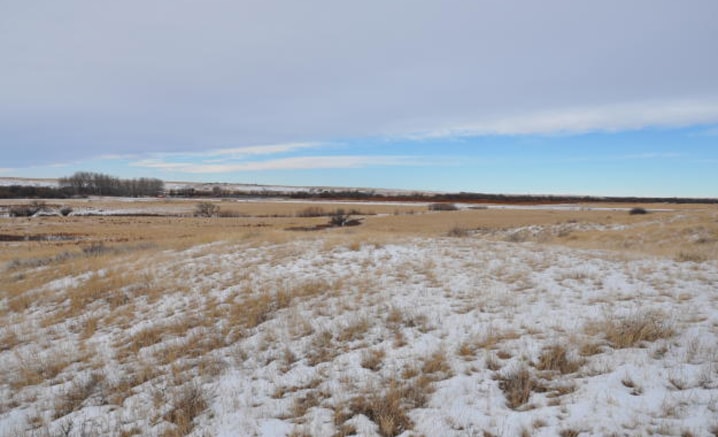From every annual conference of the Alberta Fish and Game Association there could be three or four columns of jots, tittles and tales of big bucks, all of interest and concern to Alberta’s outdoors people.
Last year a consortium that called itself Upland Birds Alberta mounted what had to be an expensive campaign to persuade the government not to let lapse, by this year’s termination date, its program of stocking 14,000 hatchery pheasants annually in Alberta. UBA even got an on-line survey going and produced a somewhat ludicrous report showing that the release of 70,000 pheasants annually would mean multi spin-off millions to Alberta’s rural economy.
The report did not really explain where we’d plant that many pheasants in this province, nor did it deal with the harm done to a self-sustaining wild population when you impose “immigrant” hatchery birds on it. But, more importantly, UBA did not recognize the fiscal reality of the basket case that is Alberta’s department of Sustainable Resource Development, which has a total budget of a pitiful $291 million for this year to try to manage our fish and wildlife, our public land, and also enforce compliance with our sport fishing and hunting regulations and administer, protect and maintain the 50 per cent of Alberta which are our public lands.
Fundamentally, if there is not enough money and manpower to get those essential jobs done, there is certainly no $1.5 million available that it would cost to plant 70,000 hatchery pheasants in Alberta. Indeed, during the lunch his department sponsored following his speech to the AFGA conference, SRD minister Frank Oberle answered a media question that the government would not be paying to stock any hatchery pheasants in Alberta this year which, when it becomes generally known, will cause withdrawal symptoms in those “hunters” addicted to executing planted hatchery pheasants . . . at the expense of the rest of us, of course.
Addicts of real pheasant hunting — hunting wily wild roosters — at the conference, were also claiming that among UBA proposals, was the suggestion that the annual pheasant licence go to $60 so that all pheasant hunters could subsidize those hooked on planted birds.
As an ironic aside, some day, somehow, Albertans are going to have to deal with our barely Sustainable Resource Development department being forced to function on that paltry $291 million while, at the same time, it gives away from $80 to $130 million annually to the various sweet deals associated with holding a public land grazing lease, such as lower than market lease fees, being able to sell the leases as though you owned the land, and being able to receive oil and gas operations surface disturbance payments on land that we, the public, and not the leaseholder, own.
Readers are always intrigued and ask questions about the Parade of Donations at each AFGA annual conference and the AFGA’s Wildlife Trust to which most of the donations are made, particularly this year, when a record total of $149,500 was donated in less than ten minutes.
Of that total, $30,000 came from the Sarcee Fish and Game Association and $75,000 from the Medicine Hat Fish and Game Association, both earmarked toward acquisition of the Ross Creek Property, approximately 950 acres east of Medicine Hat, on the north side of Hwy. 1. It is roughly made up of 72 per cent native grassland, with considerable riparian habitat along Ross Creek, all of which is home and habitat for a wide variety of wildlife: pronghorns, deer, sharp-tailed grouse, pheasants and Hungarian partridge, northern leopard frog, Sprague’s pipit, ferruginous hawk, etc.
The 37,000 acres of AFGA Wildlife Trust properties, widely located in North, South, Central, and East Slope regions of the province, are for fish, wildlife and the protection of their habitats, and most are open to lawful recreational use and enjoyment by all Albertans. The trust properties, their locations, and what they have to offer, can all be checked out on-line at www.afga.org and by following the links to “Wildlife Trust Fund,” then to the region of the particular property of interest. Addicts of executing planted pheasants at Alberta’s killing fields, Bigelow, Buffalo Lake, Millicent, etc., tell me they only frequent such zoos because they have nowhere else to go pheasant hunting. Aside from asking permission to hunt wild pheasants on excellent habitat on private land, these “homeless” souls should check out the AFGA Wildlife Trust properties in the south, many of which offer sufficiently good wild pheasant hunting that it might help them kick their planted bird habit.
I have enjoyed hunting upland game on many of these south properties and ruffed grouse, Huns, and deer on many Trust properties closer to home in the Central, North and East Slope regions. One of my favorites is the 640-acre Stonehouse property near Pine Lake, where, over the years I have hunted ruffed grouse, deer, and, in season, pot-hunted mushrooms of various species. Another amazing trust property I love just to look and marvel at is Leavitt Springs, the source of the North Raven River, Alberta’s first Bucks for Wildlife Project.
Bob Scammell is an award-winning outdoors writer living in Red Deer.
